By Rhoda Watkins.
Wildlife tracking, a time-honoured practice, serves as a bridge between humanity and the wild. Whether you’re an aspiring naturalist or simply seeking a deeper connection with nature, mastering the art (and science!) of tracking opens a fascinating door to understanding animal behaviour.
From the dawn of humanity, tracking has been an integral part of our evolutionary journey. Early humans, devoid of the technological advancements we enjoy today, depended on their keen observation and tracking skills for sustenance and safety. Tracking was not merely a skill but a lifeline that allowed primitive humans to navigate the natural world with precision.
Our ancestors, as hunter-gatherers, relied on their ability to read the landscape, interpret animal signs, and track prey. The success of a hunt was intricately linked to the tracker’s understanding of the environment and the behaviour of the wildlife in the area.
Tracking was not limited to hunting, however; it was equally crucial for avoiding threats. Early humans needed to discern the presence of predators or other dangers in their surroundings. Reading tracks and signs allowed them to navigate safely through their environment.
Tracking also transcended the practical realm and held cultural and spiritual significance. Many indigenous cultures integrated tracking into their traditions, using it to connect with nature on a deeper level. Tracking became a means of storytelling, passing down knowledge from generation to generation.
As we, as modern humans, explore this ancient art, we stand on the shoulders of those who honed tracking into a finely tuned skill over millennia. Today, while technology has transformed our lives, the essence of tracking remains a testament to our shared history with the natural world. Embracing this primal skill not only connects us to our roots but also fosters a profound appreciation for the delicate balance of life in the wilderness.
Here are a few pointers to help you to get started with tracking wildlife.
Understanding Tracks:
The most fundamental aspect of wildlife tracking is recognising and interpreting tracks or footprints. Pay attention to the size, shape, and arrangement of prints. For example, canids like foxes leave oval shaped tracks with distinct claw marks, while felines retract their claws, resulting in rounder prints without visible claw imprints. Deer leave behind ‘slots’ and smaller rodent species have tracks that look like handprints. Understanding the anatomy of tracks helps identify the species and can provide insights into the animal’s behaviour.
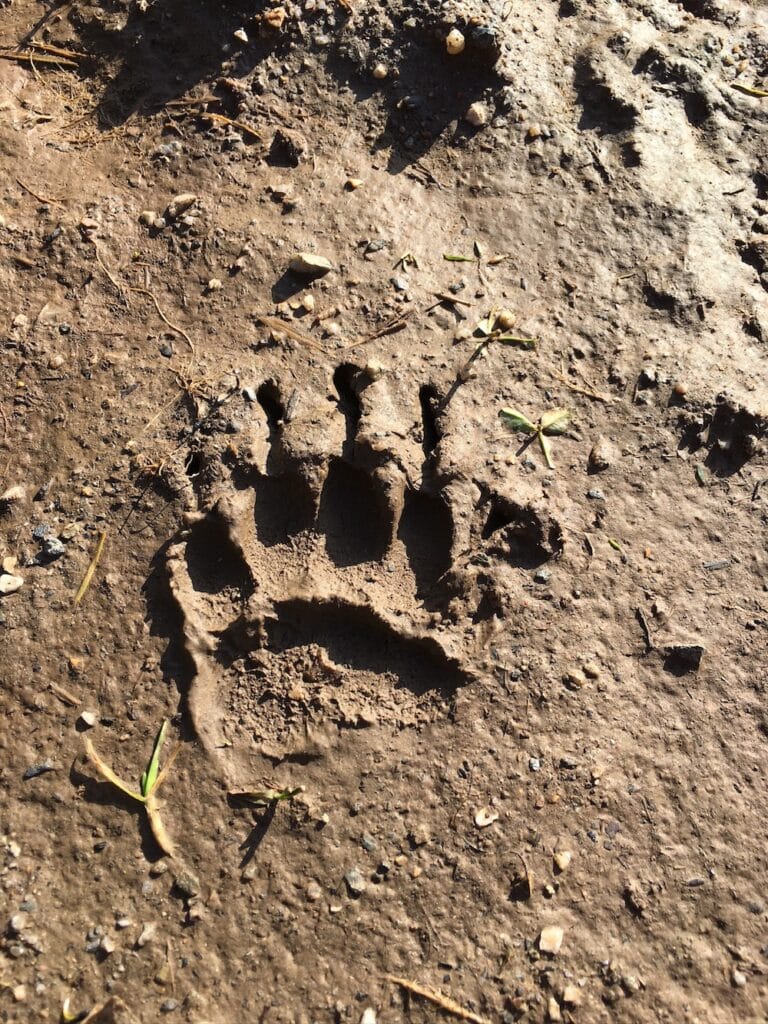
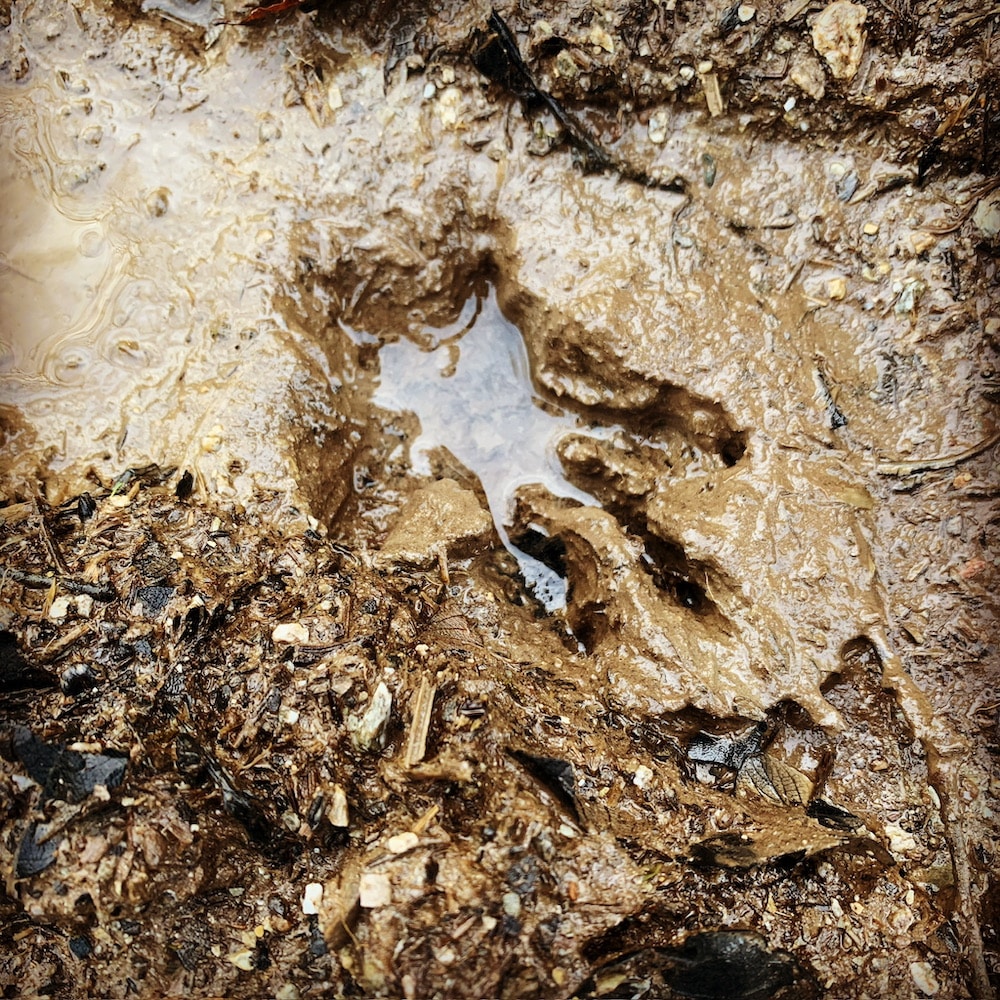
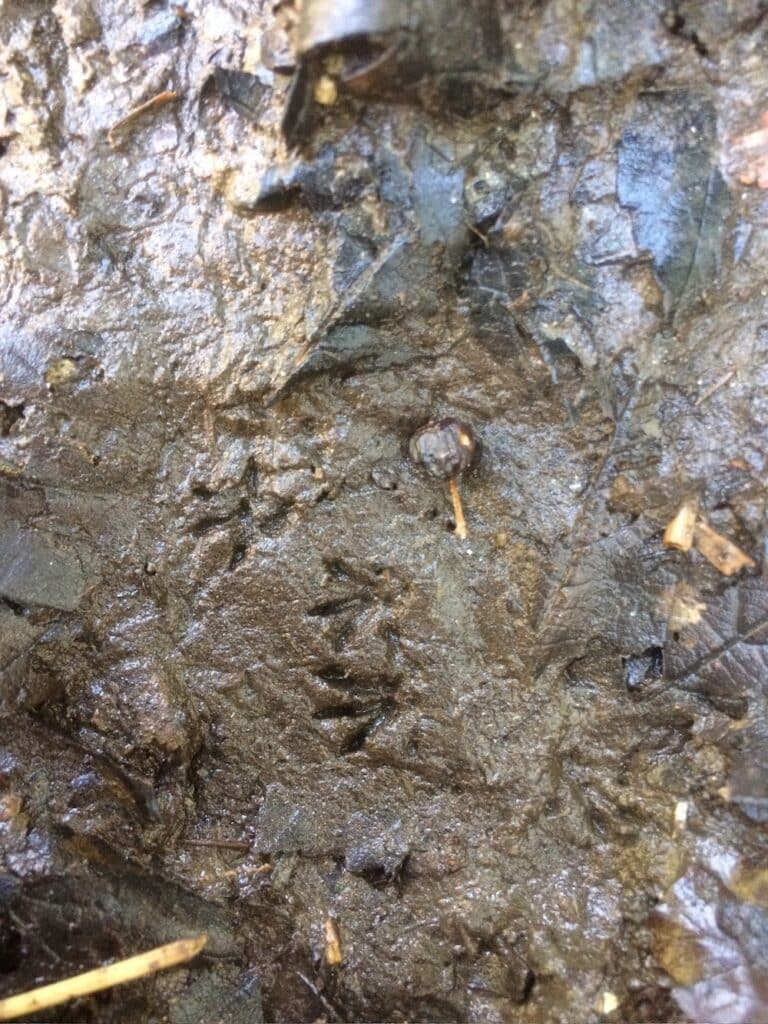
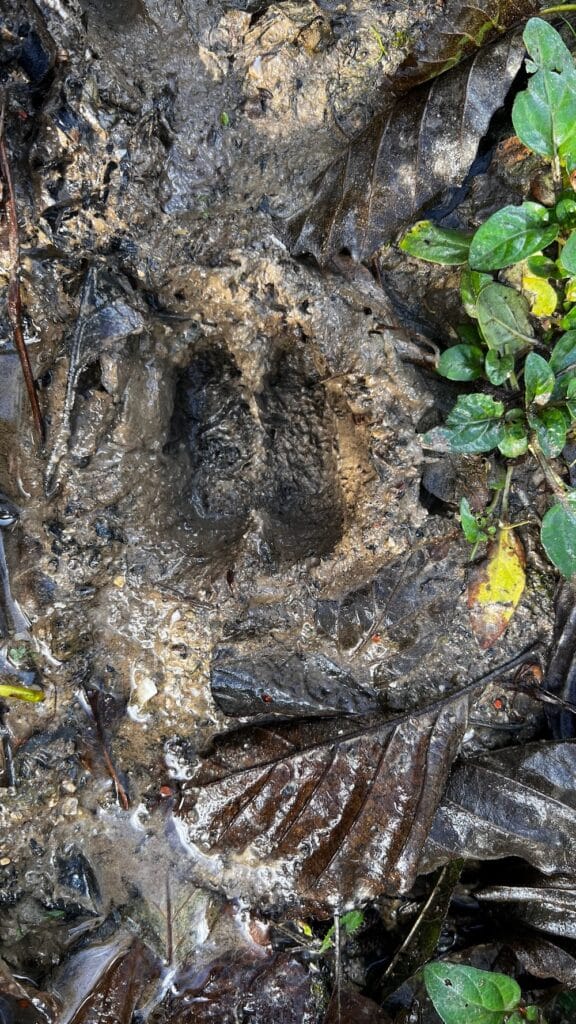
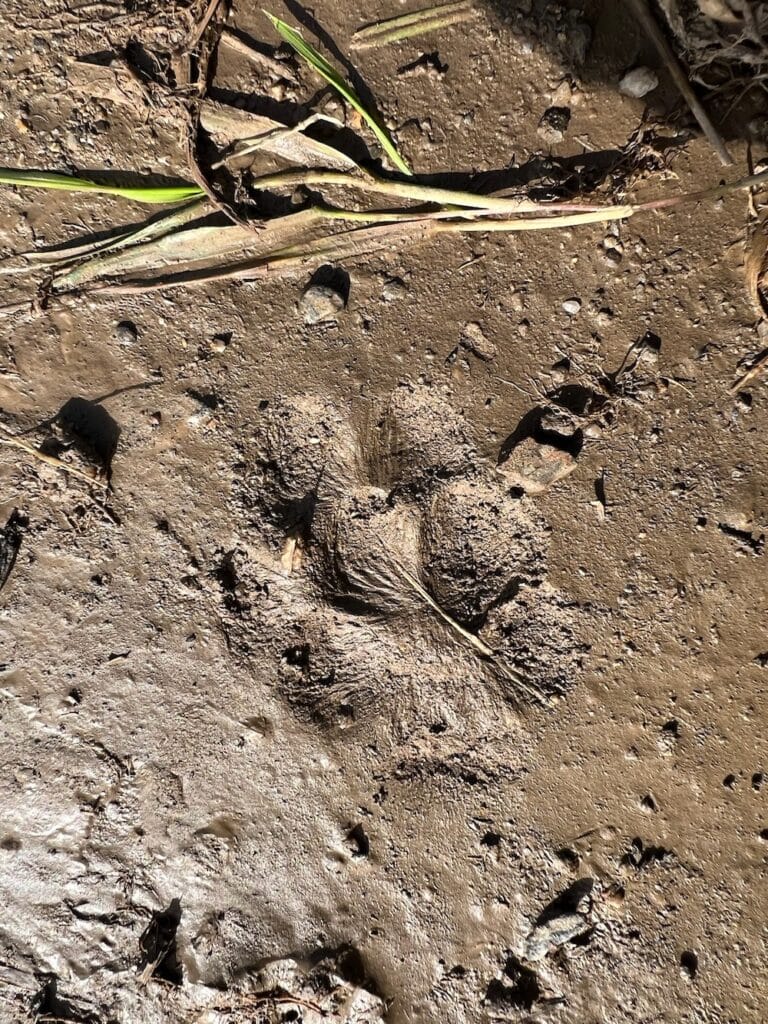
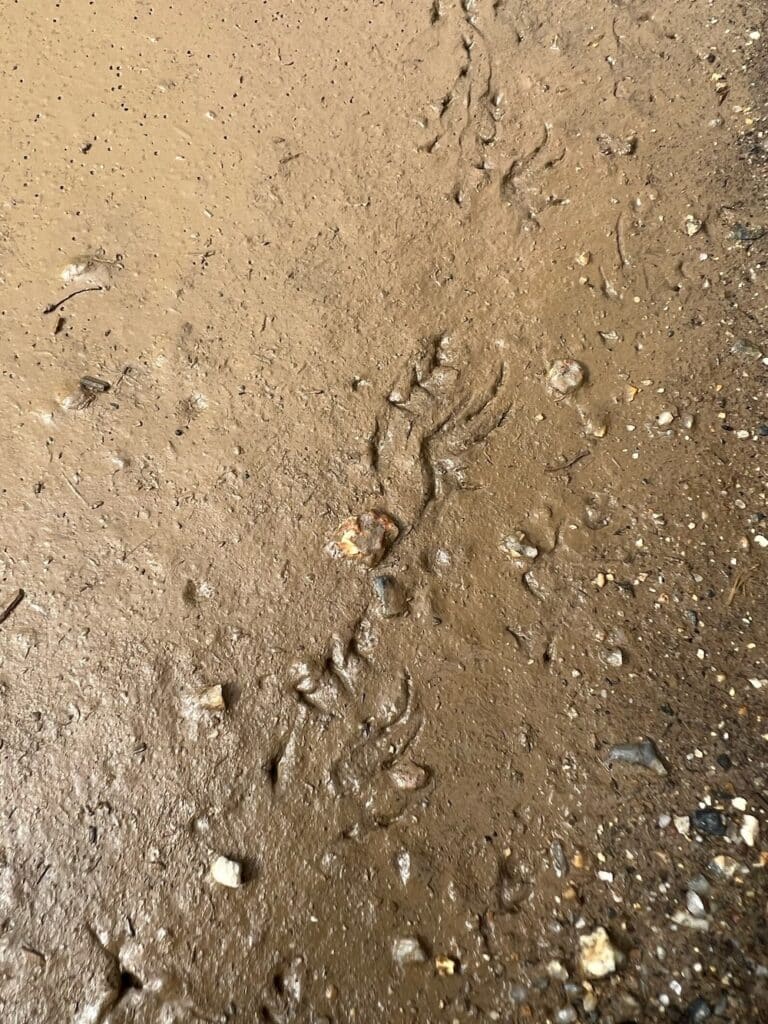
Scat and Droppings:
Wildlife scat, or droppings, is another valuable indicator of animal presence. Different species produce distinctive scat, varying in size, shape, and content. For instance, herbivores like deer leave pellet-like droppings, while carnivores may leave scat with fur and bone fragments. Examining scat can also reveal the animal’s diet and overall health.
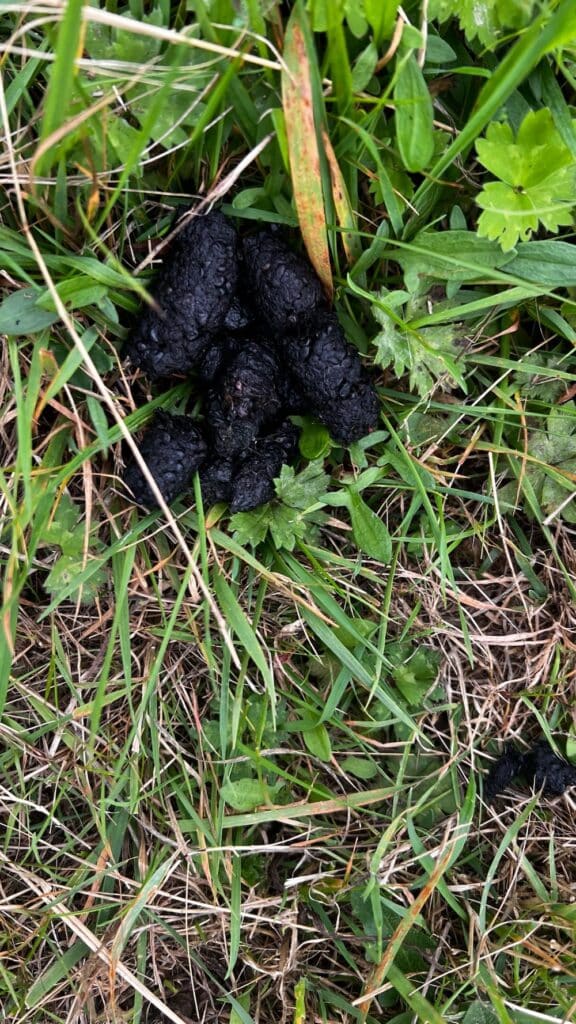
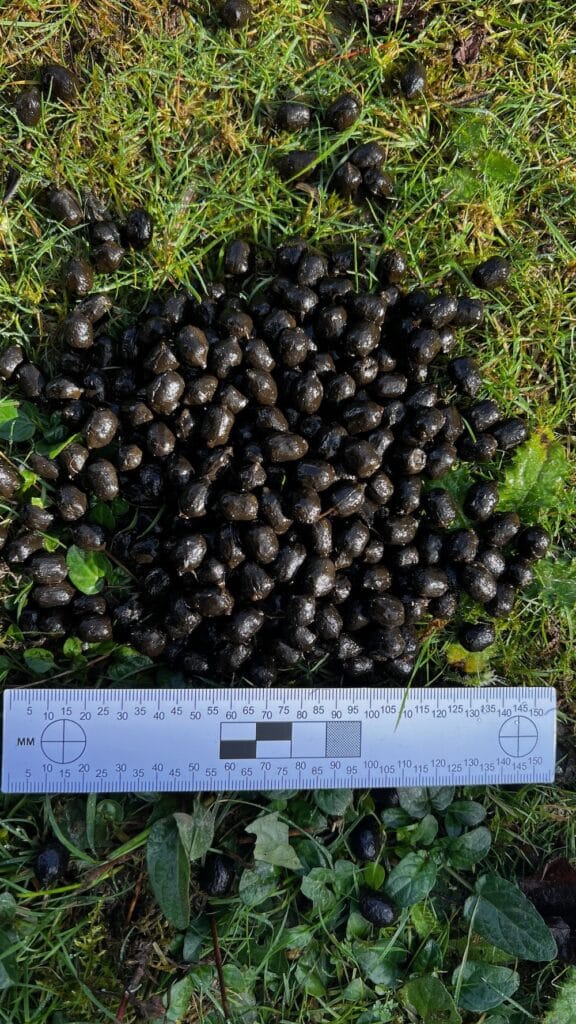
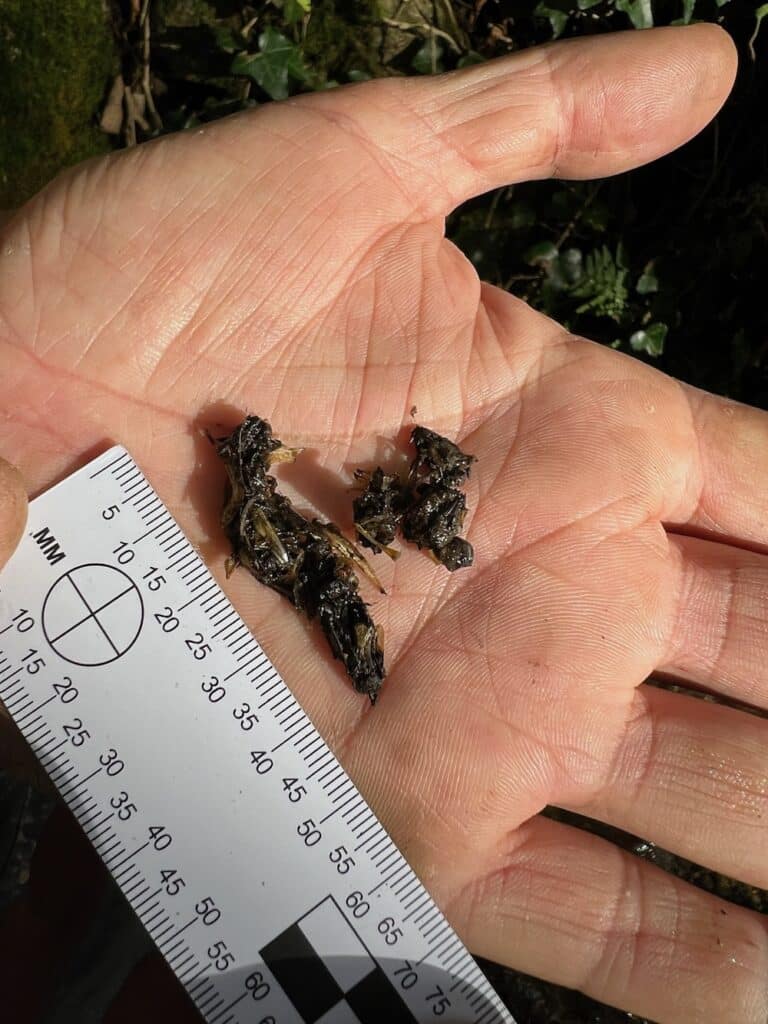
Feeding Signs:
Observing feeding signs can unveil the dietary preferences of wildlife. Look for stripped bark on trees, indicating the presence of herbivores such as deer. Carnivores may leave behind signs like feathers, bones, or fur near feeding sites. Understanding an animal’s feeding habits provides crucial information for tracking and predicting their movements.
Don’t forget to look near water sources for tracks, there are great places to find clear footprints in mud or fine gravel alongside rivers and streams.
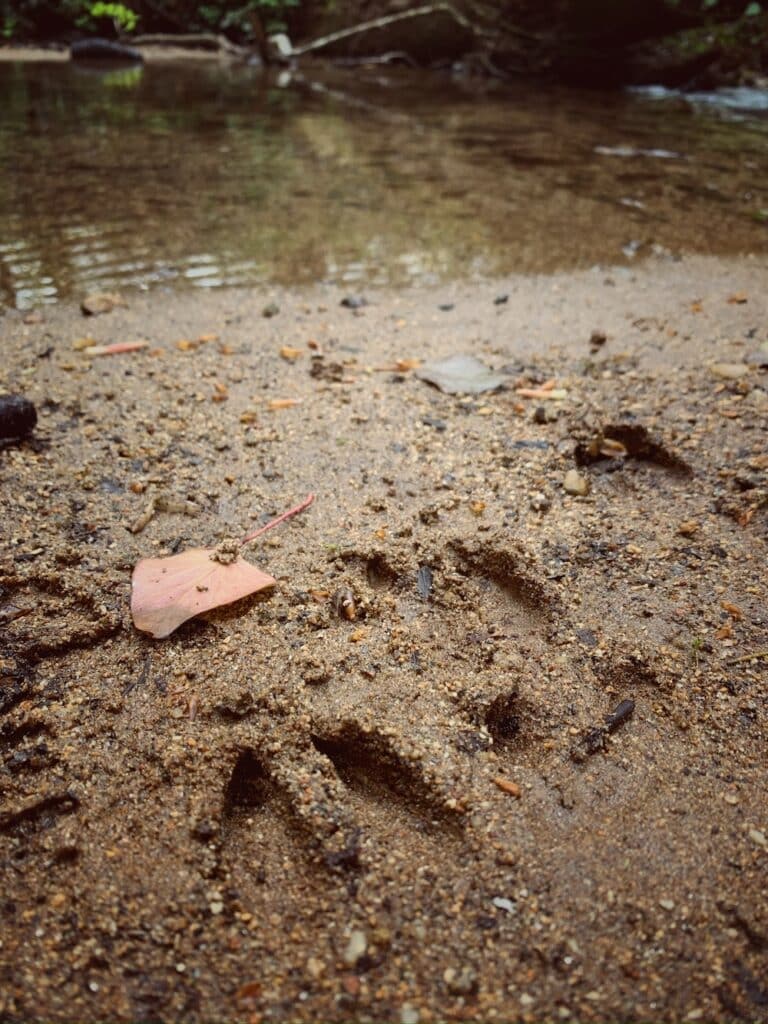
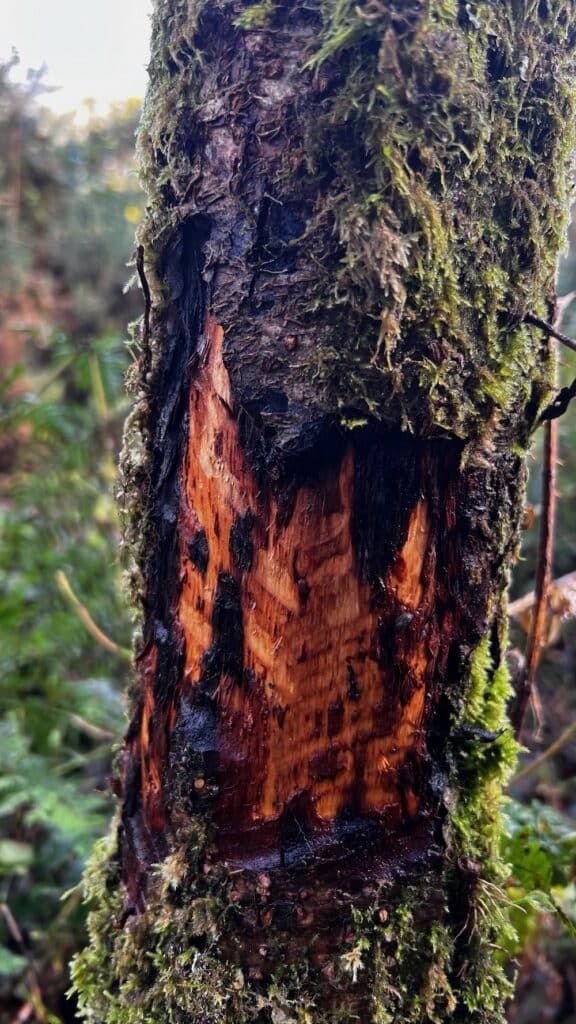
Hairs:
Look for hair where there are clear game trails, or at the entrance to holes and dens. Animals that brush past brambles or barbed wire often leave their hair behind, and the colour, texture and length of the hair can give you a good idea of which animals are in the area.
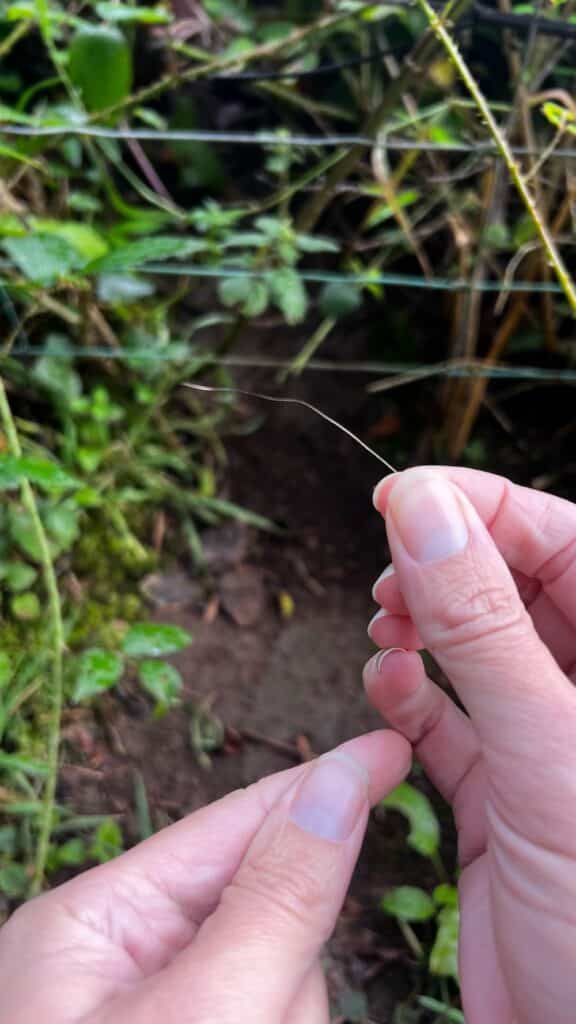
Nesting and Shelter:
Knowledge of animal habitats and nesting behaviours is vital for effective tracking. Birds build nests in trees, while mammals may create burrows, dens, or nests on the ground. Understanding the preferred shelter of a species enhances your ability to locate and track them.
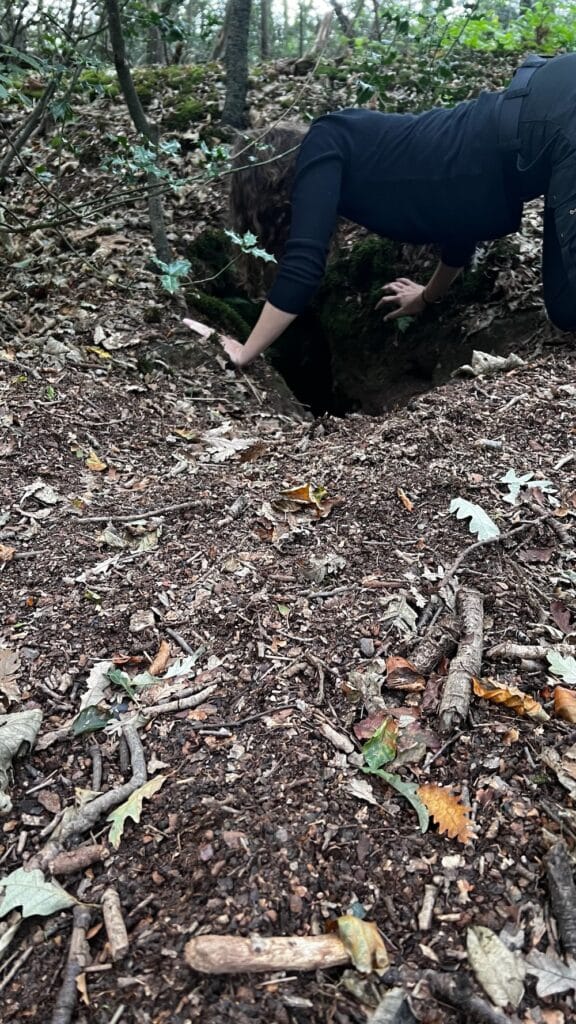
Improving Tracking Skills:
Educate Yourself: Invest time in studying field guides and resources specific to the wildlife in your region. Learn about the habits, tracks, and signs of various species to enhance your tracking proficiency.
Practice Patience: Wildlife tracking requires patience and a keen eye. Spend time in nature, observing tracks and signs regularly. The more you practice, the more attuned your senses will become to subtle clues.
Understand Ecosystems: Familiarise yourself with the ecosystems where you intend to track wildlife. Different species thrive in specific environments, and understanding these ecosystems will guide your tracking efforts.
Join Tracking Workshops: Participate in tracking workshops or guided nature walks led by experienced trackers. Learning from seasoned experts provides valuable insights and accelerates your learning curve.
Becoming adept:
Wildlife tracking demands many hours of “dirt time,” a hands-on, immersive experience in the great outdoors. It is a journey, not a race.
The term “dirt time” encapsulates the idea that true learning happens on the ground, amidst the dirt, leaves, and the very tracks you aim to decipher. Reading about tracking in books or online can certainly provide valuable knowledge, but the real magic unfolds when you step outside and apply that knowledge firsthand. It’s in the field where you refine your ability to pick up subtle cues, distinguish tracks, and anticipate the movements of wildlife.
While the nuances of tracking may seem elusive at first, the truth is that anyone can master the basics with dedication and a willingness to learn. Progress may be incremental, but each track you identify, each sign you interpret, is a step toward mastery. The more time you spend in nature, the more fluent you become in the language of the wild.
Making mistakes:
As with anything worth learning, tracking involves making mistakes and learning from them. Misinterpreting a track or misunderstanding a sign is part of the process. These errors, far from setbacks, are opportunities to refine your understanding. Over time, your ability to track becomes a dynamic skill shaped by experience and a willingness to adapt and learn from every outing.
In conclusion, while tracking demands lots of “dirt time” to reach mastery, the journey is open to everyone. Embrace the basics, spend time in nature, and let the wild be your guide. With each venture into the great outdoors, you’ll find yourself becoming not just a tracker, but a fluent speaker in the age-old language of the wilderness.
Recommended reading:
Tom Brown’s Field Guide to Nature Observation and Tracking by Tom Brown Jr with Brandt Morgan.
Animal Tracks and Signs by Bang and Dahlstrøm.
A Guide to British Mammal Tracks and Signs – Field Study Council.
All images credited to Rhoda Watkins & Jay Opie

Rhoda Watkins is a seasoned tracker and devoted naturalist bridging the gap between people and the natural world. She’s been an instructor for mantracking and wildlife tracking courses and workshops for over two decades, and has led daring expeditions in remote locations worldwide.

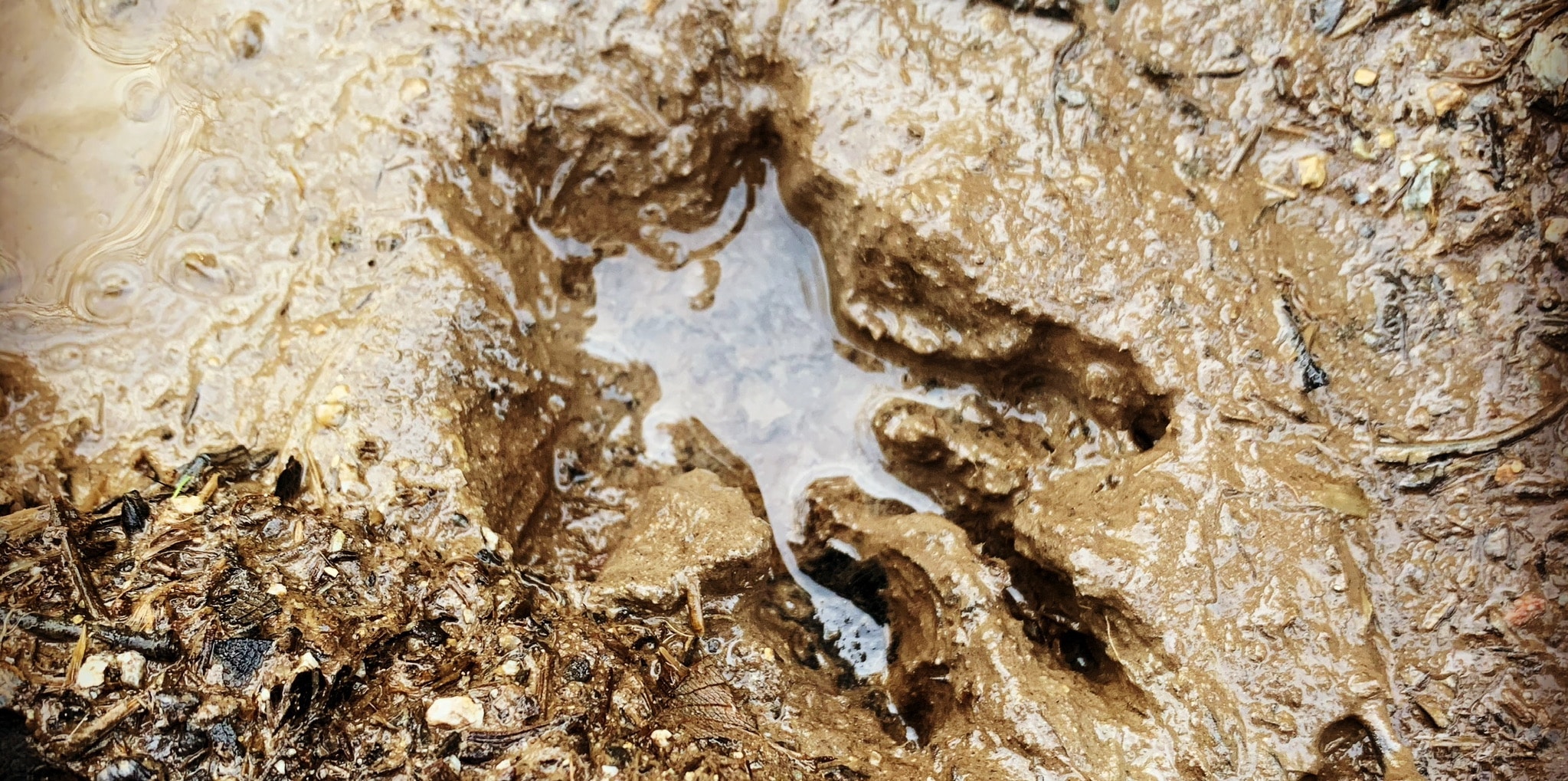




Leave A Comment
You must be logged in to post a comment.